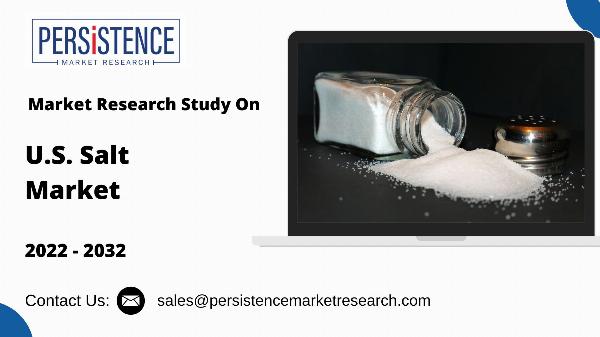U.S. Salt Market Opportunities in Sustainable Practices and Innovations

Strong 8k brings an ultra-HD IPTV experience to your living room and your pocket.
As sustainability becomes a critical focus across industries, the U.S. salt market is uniquely positioned to leverage innovative practices that align with consumer preferences and environmental concerns. The increasing demand for sustainable products presents an array of opportunities for manufacturers and suppliers.
This article explores the potential avenues for growth through sustainable practices and innovations in the U.S. salt market.
Key Opportunities in Sustainable Practices
1. Eco-Friendly Production Methods
The salt production process can significantly impact the environment. Companies can explore innovative production methods to minimize their ecological footprint.
Solar Evaporation: Utilizing solar energy for salt evaporation, especially in coastal regions, reduces reliance on fossil fuels. This method not only cuts energy costs but also appeals to environmentally conscious consumers.
Sustainable Mining Practices: Implementing responsible mining practices, such as minimizing land disruption and protecting local ecosystems, can enhance a company's sustainability credentials. Techniques like solution mining can also reduce environmental impacts compared to traditional methods.
2. Sustainable Sourcing and Supply Chains
Building sustainable supply chains can provide a competitive advantage in the U.S. salt market.
Local Sourcing: By sourcing salt from local producers, companies can reduce transportation emissions and support local economies. This practice not only benefits the environment but also resonates with consumers who prefer to buy local.
Transparent Supply Chains: Providing consumers with clear information about sourcing practices and the environmental impact of production processes can build trust and loyalty. Brands that prioritize ethical sourcing and supply chain transparency are more likely to attract eco-conscious consumers.
3. Innovative Packaging Solutions
Packaging plays a significant role in sustainability efforts within the salt market. Companies can explore several avenues to reduce packaging waste and enhance recyclability.
Biodegradable and Recyclable Packaging: Utilizing biodegradable materials for packaging can significantly reduce environmental impact. Offering refillable or recyclable packaging options also aligns with consumer preferences for sustainability.
Minimalist Packaging Designs: Reducing packaging size and complexity can lower production waste and transportation costs, contributing to a more sustainable approach.
Innovations in Product Development
1. Specialty and Functional Salts
Innovations in product development can attract a broader consumer base seeking health benefits and unique flavor experiences.
Health-Focused Salt Variants: Developing salt products enriched with minerals or nutrients, such as potassium or magnesium, can cater to health-conscious consumers looking for alternatives to traditional table salt.
Flavored and Gourmet Salts: Introducing innovative flavor combinations or blends, such as herb-infused or smoked salts, can enhance culinary experiences and appeal to gourmet enthusiasts.
2. Salt Substitutes and Alternatives
The growing demand for low-sodium and salt-free options presents significant opportunities for innovation.
Salt Substitutes: Developing and marketing salt substitutes made from natural ingredients, such as potassium chloride or seaweed extracts, can meet the needs of consumers aiming to reduce sodium intake.
Functional Food Products: Incorporating salt into functional food products that promote health benefits can attract health-oriented consumers. This can include items like fortified snacks or ready-to-cook meal kits featuring gourmet salts.
3. Smart Salt Products
Integrating technology into salt products can create unique consumer experiences and enhance convenience.
Smart Packaging: Utilizing QR codes or NFC technology on packaging can provide consumers with detailed product information, recipes, and sustainability practices, fostering greater engagement.
App-Connected Products: Developing app-connected products that suggest recipes or monitor salt usage can enhance the cooking experience and align with the tech-savvy consumer base.
Conclusion
The U.S. salt market presents significant opportunities for growth through sustainable practices and innovations. By adopting eco-friendly production methods, enhancing supply chain transparency, and developing innovative products, companies can not only meet the evolving demands of consumers but also contribute positively to the environment.
Emphasizing sustainability and innovation will be essential for stakeholders looking to capture market share and build a brand that resonates with today’s environmentally conscious consumers. As the industry evolves, those who prioritize sustainability will likely lead the way in shaping the future of the U.S. salt market.
Note: IndiBlogHub features both user-submitted and editorial content. We do not verify third-party contributions. Read our Disclaimer and Privacy Policyfor details.







